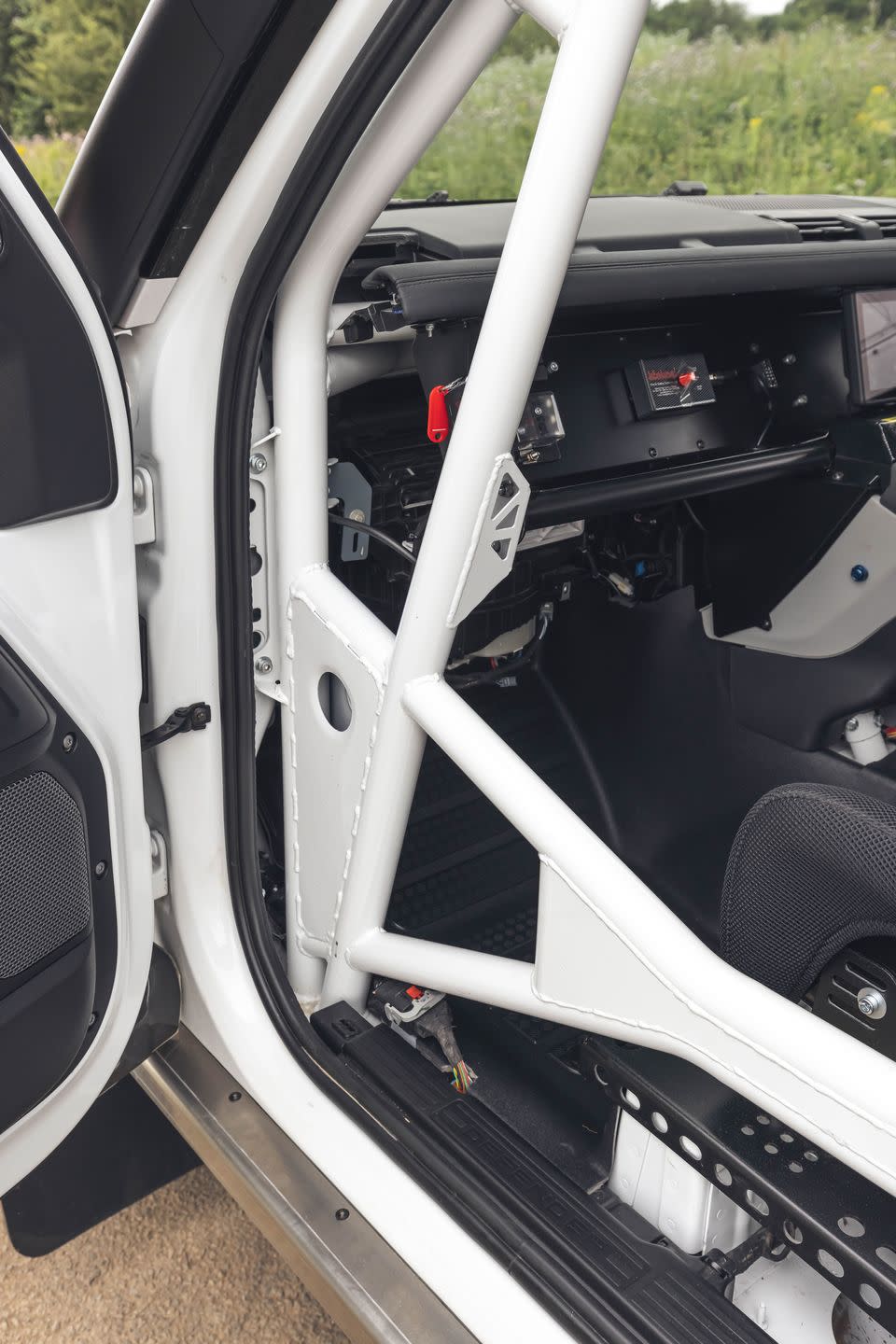Land Rover Bowler Defender Challenge: Short on Finesse, Big on Fun

Land Rover isn't commonly associated with the faster and more exciting forms of motorsports. The British SUV maker was formerly known for its patronage of the Camel Trophy and later G4 Challenge, but both of these competitions prioritized slow, cerebral performance above never-lift thrills. When it comes to off-roading, Land Rover's guiding motto has always been "as slow as possible, as fast as necessary."
The new Bowler Defender Challenge reverses those principles in spectacular style. It's a rally version of the new Defender 90 that has been designed to attack terrain at speed and soak up the sort of punishment that would break regular SUVs in short order. Up to a dozen identically prepared Challenge cars are going to be competing in a six-round championship series in Britain next year, with hopes of bringing something similar to the United States.
Bowler has been modifying Land Rovers for off-road competition since 1985. Its best-known products are probably the Wildcat and Nemesis, V-8-powered monsters on a spaceframe chassis with styling cues from the last-generation Defender and Range Rover Sport. The company also made a rallying version of the old Defender, and the original Defender Challenge used identical spec cars and ran in the United Kingdom from 2014 to 2016. This was popular, but not enough to prevent Bowler from going bankrupt in 2019; the company subsequently was bought by Jaguar Land Rover and placed in the Special Operations Division.
The new Bowler Challenge car is based on the Defender 90 P300 and uses an unmodified version of that car's 296-hp turbocharged 2.0-liter four-cylinder engine and eight-speed automatic gearbox—an unusual transmission choice for a rally car. That makes it considerably more potent than the Challenge version of the old Defender, which used a 2.2-liter turbo-diesel with just 170 horsepower. A drive on an impromptu rally stage created in one of the rougher parts of JLR's Fen End test track in England proved the new Bowler is more than fast enough to be thrilling.

Although the driveshafts, differentials, and brake components are all standard parts, substantial changes have been made. The most obvious of these is the addition of an FIA-spec roll cage that has been integrated to the car's structure with welded joints to the floorpan and suspension turrets. The springs are both stiffer and an inch taller than those of the standard Defender 90, and the Challenge gets remote-reservoir Fox Racing dampers—similar to those that enable the Ford Raptor to do its anti-gravity landings.
Other changes include surgery to the regular Defender's doors: The 2.8 inches that overlap the sills have been removed to reduce the risk of damage from impacts. (Snazzy perforated sill protectors replace them.) At the front is a much simpler fiberglass bumper in place of the standard car's complex molding, and the Bowler's radiator is cooled through a mesh-covered aperture rather than the plastic radiator grille. The 90's low-mounted auxiliary heat exchangers have also been removed due to the risk of damage. Rally cars crash, so repairs need to be as simple and inexpensive as possible.

 Yahoo Autos
Yahoo Autos 